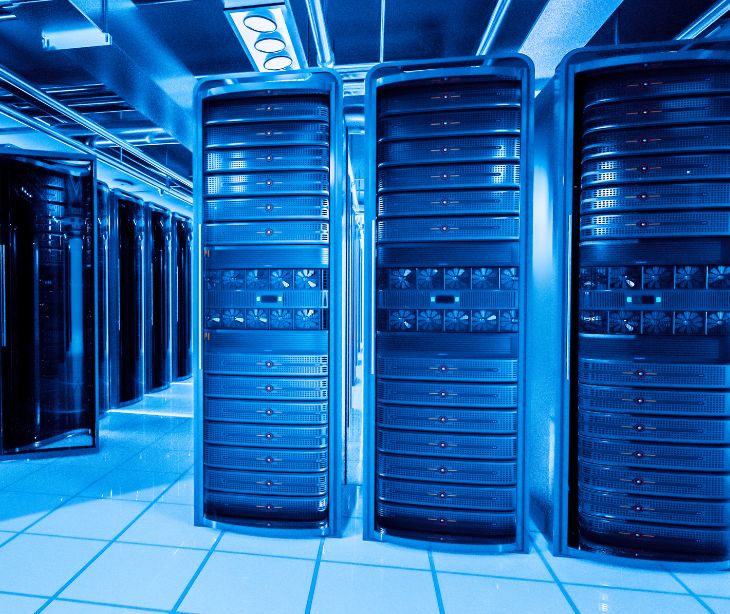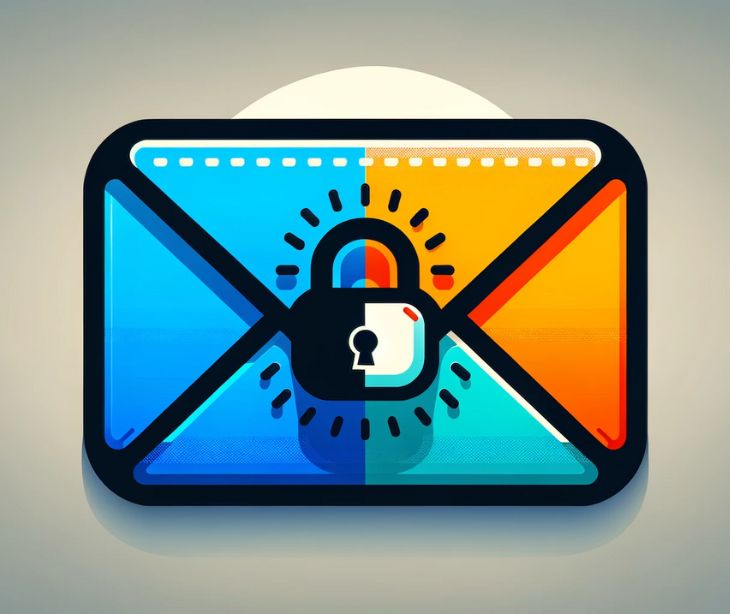
Data Loss Prevention (DLP) is a broad security discipline that uses tools and processes to identify, monitor, and block sensitive information from leaving an organization by accident or through malicious activity.
In healthcare, a research article in the Journal of Artificial Intelligence, Machine Learning and Data Science on data loss prevention explains, “Healthcare information, especially protected health information (PHI), is considered to be amongst the most private and sensitive data.” Healthcare systems store and transmit vast amounts of PHI through cloud platforms, electronic records, and digital communication channels, increasing the risk of unauthorized disclosure.
Moreover, these “Electronic records and systems contain a wealth of all kinds of patient information…” Therefore, “it is imperative that this data remains safeguarded and is not disclosed to any unauthorized personnel or third parties.”
To protect this data, healthcare-related DLP uses continuous monitoring, content-aware analysis, access controls, encryption, and intelligent threat detection to stop the unauthorized access, transfer, exposure, or exfiltration of PHI across cloud, email, and hybrid environments.
What makes the problem even more urgent is that healthcare companies are liable for all data leaks, even if it’s accidental. The cause does not matter; HIPAA does not distinguish between a bad actor stealing PHI and a distracted employee attaching the wrong file.
Why data loss prevention is necessary for healthcare
Other academic research articles support this. In Advanced Cybersecurity Protocols for Securing Data Management Systems in Industrial and Healthcare Environments, the authors state that “Data Loss Prevention (DLP) solutions are crucial for safeguarding sensitive information by preventing unauthorized data exfiltration through continuous monitoring and control of data transfers.”
The article further states that “content-aware DLP systems enhance this capability by analyzing data content in real-time to identify sensitive information, such as personal identifiable information (PII), financial records, or intellectual property.”
PII and PHI are extremely valuable to cybercriminals, and workflows create points where information can slip through the cracks. Like, when a clinician forwards patient notes without realizing another patient’s name is buried in the thread. While some healthcare organizations may rely on encryption and spam filters, these tools do not stop an employee from knowingly or unknowingly transmitting PHI. DLP systems must “detect, monitor, and block the unauthorized transmission of sensitive data, thereby mitigating the risk of data breaches.”
For example, if a care coordination team emails lab results to referring physicians and a typo, like “corn” instead of “.com,” could inadvertently send sensitive lab data to a stranger, and that email leaves the organization. However, with DLP, the system scans the subject line, body, attachments, and metadata, identifies PHI, and blocks transmission before any damage occurs.
Another example could be if a practice administrator receives a referral that contains far more information than they should access. Role-based limitations under HIPAA’s Minimum Necessary Rule require that only specific individuals access certain types of patient data. DLP can automatically quarantine these emails, keeping unauthorized staff from seeing information they are not permitted to handle.
DLP upholds HIPAA compliance
- Privacy Rule: Prevents unauthorized disclosures of PHI by ensuring only appropriate recipients can receive sensitive data.
- Security Rule technical safeguards: DLP uses automated measures to protect electronic PHI against threats and improper disclosures.
- Minimum necessary standard: Blocks internal emails containing clinical details from being sent to staff with non-clinical roles.
- Organizational requirements: Supports consistent policy enforcement across the entire workforce.
The abovementioned study also reinforces this alignment, explaining how “granular control helps organizations comply with regulatory requirements and protect their critical assets from malicious insiders or inadvertent leaks by employees.”
Ultimately, healthcare compliance leaders must use DLP as a protective measure and as evidence of due diligence.
How email-based DLP is used
According to the Journal of Academic Medicine study on Professional E-mail Communication Among Health Care Providers, “Email is now a primary method of correspondence in healthcare, and proficiency with professional email use is a vital skill for physicians.”
While it is fast, ubiquitous, and familiar, “there are serious legal and ethical implications when unprofessional or unsecured e-mails related to patient-identifying information are exchanged or included within an electronic medical record.” This is especially true considering that email is the number one attack vector for healthcare breaches.
Some recent examples of this would be the Treasure Coast Hospice email breach impacting 13,234 individuals, the email hack at Healthcare Therapy Services, Inc., which could expose thousands, as well as the AultCare email breach reported earlier this year.
Examples of when email DLP can help
When a provider forwards a patient’s referral, but doesn't notice that the PDF includes multiple patients’ information in the scanned stack. Before that message leaves the healthcare organization, DLP scans the attachment, detects the additional PHI, and blocks the email to prevent an accidental breach.
A billing specialist tries to send insurance information to a payer but mistypes the address by one character. DLP then recognizes that PHI is being sent to an unapproved or unknown domain and automatically quarantines the message, preventing it from reaching the wrong recipient.
A vendor accidentally emails authentication details, including patient identifiers, to a general “info@” inbox at the clinic. Inbound DLP can intercept the message and prevent staff who should not access PHI from seeing it.
Inside the organization, DLP stops internal disclosures as well. If a staff member accidentally CCs a large distribution list that includes team members who should not receive PHI, DLP scans the message, identifies the exposure risk, and blocks delivery.
DLP also provides safeguards in research settings. Like, if a research coordinator sends patient data to an analyst without clearance for identifiable PHI, DLP detects the mismatch between the data type and the recipient’s access level and prevents the email from being delivered.
Ultimately, email DLP is the mechanism that stops the situation before it becomes a breach.
What makes Paubox DLP different?
Paubox email solution was purpose-built for healthcare with HIPAA compliant features. Its DLP approach uses multi-dimensional scanning, inbound and outbound filtering, and integrates advanced encryption and inbound security to form a unified email security platform.
How Paubox provides solutions for healthcare organizations
1. Multi-dimensional scanning
Paubox analyzes every part of the email, including the body, sender, recipient, subject, attachments, and headers. The platform will even detect if PHI is hidden in a PDF, mentioned in a forwarded chain, or mistakenly placed in a subject line.
It also allows users to customize the scanning criteria and decide to quarantine emails with specific types of data. So, if a provider accidentally types a patient name (a PHI identifier) into the subject line, Paubox recognizes the identifier and can automatically enforce organizational policy, quarantining it for admin review.
2. Outbound DLP to stop accidental and malicious leaks
Outbound DLP protects healthcare organizations from breaches that occur when sensitive information leaves the organization without authorization. This is particularly useful since “Healthcare is the only industry in which internal actors are the biggest threat to an organization,” with 58% of incidents involving insiders, according to the 2018 Verizon Protected Health Information Data Breach Report.
Paubox can block or quarantine outbound messages that contain:
- PHI or PII
- Bulk patient lists
- Scheduling or clinical details
- Insurance or payment data
- Lab results or medical imaging
- Social Security numbers
- Financial records
- Employee or patient identifiers
For example, if a staff member tries to email themselves a spreadsheet of contacts to “finish at home.” Paubox detects the presence of patient identifiers and stops the message instantly. Or a physician replies to an email chain not realizing it includes information about multiple patients; Paubox catches the embedded PHI before it exits the organization.
Outbound protection also protects the organization from insider threats. Like, if a disgruntled employee attempts to steal PHI before resigning, Paubox’s DLP rules prevent the data from leaving the system.
3. Inbound DLP to enforce minimum necessary access
Paubox’s inbound DLP prevents staff from receiving data that they aren’t authorized to view. For example, a scheduler should not receive lab results containing diagnoses, or an administrative assistant should not receive a patient’s mental health notes.
Paubox identifies these issues and quarantines the email before it’s in the inbox, protecting the organization from a potential HIPAA violation. Its dual-direction approach, safeguarding inbound and outbound PHI, gives healthcare organizations a more complete policy enforcement capability.
4. A unified email security platform for healthcare
Most organizations juggle different platforms for encryption, inbound filtering, archiving, and DLP. Furthermore, “DLP solutions often integrate with other security tools and platforms…to provide a comprehensive approach to data security,” as evidenced by the study on Advanced Cybersecurity Protocols.
Paubox consolidates all of these into a single platform that includes:
- Patented automatic email encryption
- Inbound email threat protection
- Granular DLP rules
- Email archiving
- Centralized quarantine
- Unified admin reporting
Administrators can manage all DLP configurations directly within the Paubox dashboard, simplifying oversight and reducing time spent on compliance monitoring.
5. Granular, flexible policy enforcement
Paubox allows organizations to create rules tailored to clinical workflows and compliance needs. Examples include:
- Blocking PHI from being sent to personal email domains.
- Preventing sensitive attachments from leaving the organization.
- Restricting inbound messages containing specific data types.
- Notifying compliance teams when policy violations occur.
- Automatically encrypting emails containing PHI.
- Enforcing different rules for clinical and non-clinical staff.
- Applying enhanced protection for departments with greater exposure (billing, care coordination, referrals, etc.).
These controls continuously implement the organization’s policies, minimizing its human dependency, like relying on staff remembering to double-check email content.
The ROI of using HIPAA compliant emails
DLP prevents incidents that are expensive, time-consuming, and reputation-damaging, delivering measurable return on investment (ROI).
Financial ROI
Even a small healthcare data breach can carry an enormous financial impact, costing organizations hundreds of thousands of dollars in patient notification expenses and regulatory fines, with HIPAA’s annual maximum fine set at $1,919,173.
Additionally, the organization would be liable for legal fees and the administrative burden of OCR investigations. These incidents can also result in years of corrective action plans, making a single breach a long-term financial liability.
Operational ROI
From an operational standpoint, DLP reduces risk at the source, leading to fewer security incidents, fewer time-consuming investigations, and effort spent reviewing misdirected emails. It automates compliance checks, preventing issues before they occur and helping healthcare teams work with fewer interruptions.
On the other hand, when an organization suffers a healthcare breach, it could affect the way patients seek care, resulting in an average of 4.65% reduction in hospital visits.
Reputational ROI
When providers are HIPAA compliant, they demonstrate a commitment to safeguarding patient privacy and improving trust in the patient-provider relationship. Paubox email also helps providers uphold the ethical principles of beneficence, non-maleficence, and respect for patient privacy, to earn the trust and respect of their patients.
Go deeper: Why HIPAA compliant email has a high return on investment (ROI)
FAQs
What is email encryption?
Email encryption scrambles message content so only authorized recipients can read it. Healthcare organizations must use advanced encryption methods to meet HIPAA transmission security requirements.
HIPAA compliant email solutions, like Paubox, automatically encrypt emails during transmission and at rest, securing protected health information (PHI) and upholding federal standards.
What is malicious data exfiltration?
Malicious exfiltration is the intentional theft or removal of sensitive data, often by cybercriminals or disgruntled insiders. Examples include forwarding PHI to personal email accounts, exporting spreadsheets, or using compromised credentials to access mailboxes.
What is content-aware DLP?
Content-aware data loss prevention (DLP) uses continuous scanning to analyze the content of emails, attachments, or files, detecting PHI, financial information, or clinical data. It stops transmission before a breach occurs, even when users don’t realize sensitive data is included.
Subscribe to Paubox Weekly
Every Friday we'll bring you the most important news from Paubox. Our aim is to make you smarter, faster.




